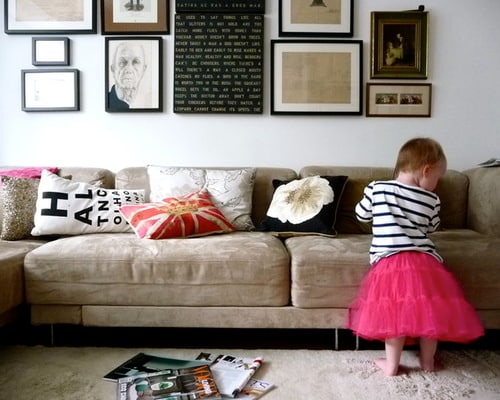Becky Dietrich, Houzz
We all agree that keeping our little ones safe at home is a paramount responsibility for parents. The home can be a treacherous place, and plenty of expert advice is available to help minimize the risks that children face.
As an interior designer, however, I find that safety often trumps looks. But do we really want to postpone having a beautiful interior for all those years that our kiddos are small and curious? Plus, what do we do when children are visiting someone else’s home — whether it’s a grandparent, neighbor or friend — and their home has not been childproofed?
I propose that childproofing has as much to do with the behaviors we foster in our children as it does with protective gadgets.
Just to reiterate: I completely embrace basic safety measures like outlet covers and cabinet locks. After all, three of my seven grandchildren were born within two months of each other (a new definition of chaos), and when they were all crawling as fast as possible in three different directions, I wanted to know that we had taken the necessary steps to protect them from danger.
But we also understood that learning to respect other people’s property was critical to their long-term survival and success as humans, as was learning that the world is full of no’s. When a child is running into the street after a ball, it’s no time to gently suggest a different course of action. Creating parameters was an important aspect of preparing them for the realities of life.
[ Related Reading: Keep Kids Busy With DIY Chalk Paint ]
That said, a playpen and some teething biscuits were often my best friend. I could go to the bathroom, or get the mail, or pay attention to an important phone conversation, knowing that the kids were safe and secure (if not necessarily delighted). I seriously do not understand why such a safe and effective parenting tool has become politically incorrect.
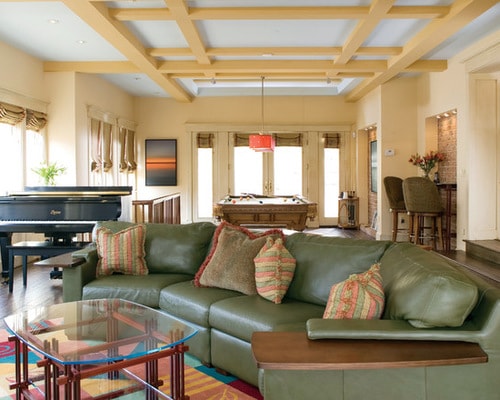
After the grandchildren were born, we welcomed a leather sofa into our home. Chocolatey, sticky, jammy fingers did no serious damage to the hide, so the kids knew they were welcome on the sofa (but not on Grandma’s Louis chairs).
We also used a glass coffee table. I can just hear the gasps across the Houzz planet. “What about all the fingerprints?” Uh, glass cleaner and a paper towel were a pretty effective and quick fix.
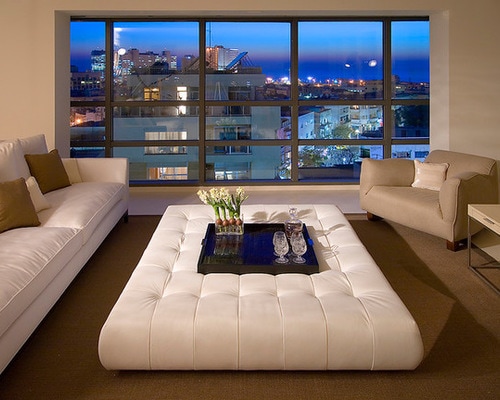
Clients often told me they didn’t want to buy good-quality furniture until after the kids were gone. I never understood that. If there is ever a time when quality is important, it’s when your furniture is going to be subjected to the most wear and tear.
It’s also when “Made in the USA” is so important, because manufacturing standards — especially regarding potentially hazardous chemicals — are so stringent here.
Buying furniture with soft corners, like the pieces shown here, is also a really good idea. It looks great and is very baby friendly.
Rounded shapes are also fun on a coffee table. But face it, guys, babies are going to have their cuts and bruises. We were visiting my husband’s grandmother when our son, Tyler, was 18 months old. We hadn’t been there five minutes before he did a face plant into her china cabinet, badly cutting his eyebrow on the base molding.
[ Related Reading: Kid-Safe Cabinet Hardware For Your Kitchen ]
He screamed bloody murder for a bit (a sure sign, our pediatrician assured me, that his injury was not really serious) and required several stitches, but he gained a newfound respect for furniture.
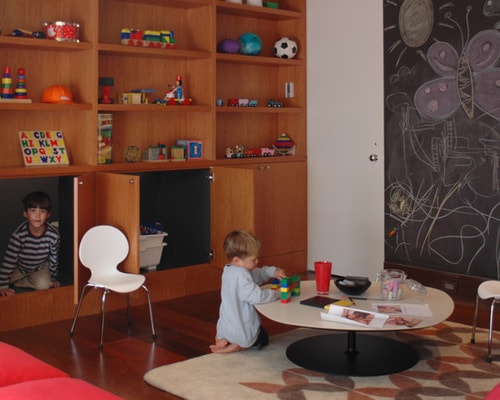
I always love when rooms include someplace that tells the kids they are welcome. Cubbies like these, incorporated into a built-in and filled with a comfy blanket and favorite toys, create such a welcoming place. Adding a blackboard is another way to give children a place to express themselves, and is a vast improvement over dealing with permanent markers on walls.
My children always wanted to be in the kitchen with me when I was cooking, and my grandchildren have followed in their footsteps. To make that a less harrowing experience, I took all the pans out of a bottom drawer and replaced them with lightweight kitchen things the kiddos could play with safely. I included a wooden spoon and a pan they could bang on, and that was always their favorite thing.
Distract your baby from forbidden places by keeping one cupboard unlocked and filled with baby-safe items.
While we want to protect our kids, we don’t want them to live in a bubble. They need to be able to learn to climb stairs, for example. Which is why I love this baby gate. Not only does it rise out of the floor (genius!), but it perfectly accommodates babies’ love of going up and down stairs. They can master this important skill to their heart’s content without risking serious injury, especially if you include a soft landing pad at the bottom.
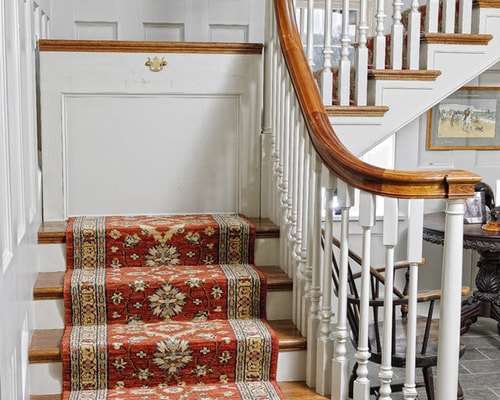
Persian carpets are another friend to parents of small children. Again, my clients would demur, thinking such rugs are “too precious” to use with kids.
[ Related Reading: Indestructible Concrete Counter Tops That Survive Kids Messes ]
But think of the history of these carpets. They were slung across the backs of camels and left in the blazing sun. They were cooked on and beaten with rods. Not only is a hand-knotted rug tough, but you can clean it very easily, and it hides almost everything that gets spilled on it. Compare that to your average solid-colored broadloom, and ask which you would rather raise children on.
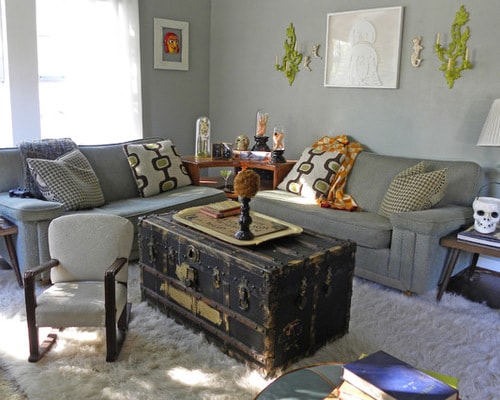
Like quality furniture and Persian rugs, antiques should not be avoided just because you have Rugrats. After all, most antique pieces come distressed, so another scratch or dent is no big deal. And as they have already survived several generations of family life, it’s likely they will survive your kiddos as well. I particularly like this antique trunk coffee table. It’s a toddler-friendly height: too tall to catch a forehead when they fall, but tall enough to provide a play surface.
Here’s the bottom line: If childproofing teaches our little ones that anything within reach is fair game, we have done them and ourselves a serious disservice. Not only will visiting friends or family be a nightmare, but your kids will not have learned a basic precept of civilized life: respect for other people’s property.
In addition, self-restraint and self-control will be a more difficult to learn when they start encountering life’s realities, which will begin around kindergarten.
This post originally appeared on Houzz.com, it has been reprinted with permission.
Houzz is the leading platform for home remodeling, improvement, and design. We provide our community of over 40 million unique monthly users with everything they need to improve their home from start to finish – online or from a mobile device. With the largest residential design database in the world and a vibrant community powered by social tools, Houzz is the easiest way for people to get the design inspiration, project advice, product information and professional reviews they need to help turn ideas into reality.
